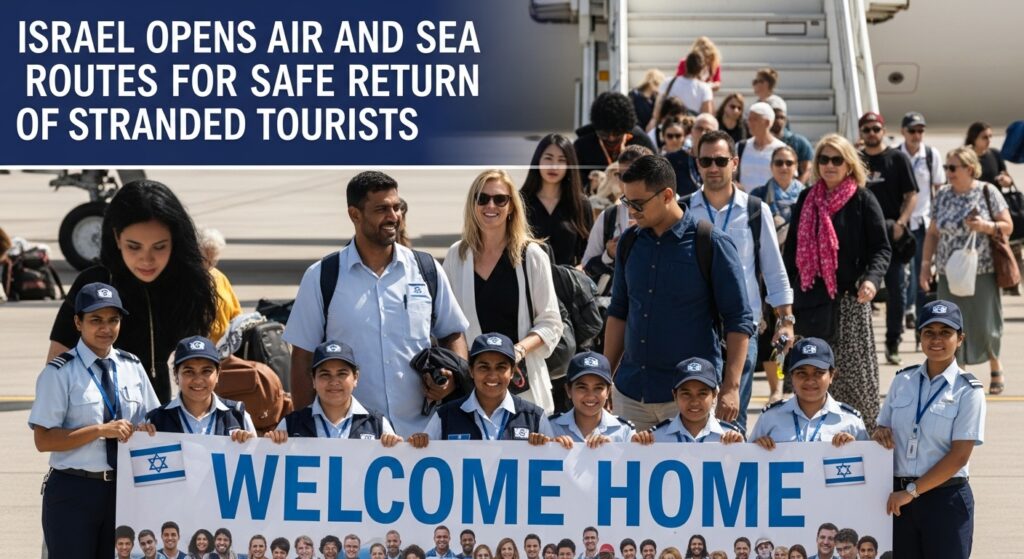Thousands of tourists caught in Israel during the recent Israel–Iran conflict can finally breathe a sigh of relief as the Israeli government reopens air and sea routes, offering multiple options for a safe return home.
After days of uncertainty and closed airspace, coordinated efforts by the Ministry of Tourism and Transportation have set in motion a carefully managed repatriation process, balancing security with travelers’ needs.
Air Travel Resumes with Strict Safety Protocols
Outbound flights have resumed from Ben Gurion Airport, but with significant restrictions to ensure safety. Each flight is capped at just 50 passengers, dramatically reducing airport crowding and minimizing time spent in high-risk areas. Tourists are advised to contact Israeli airlines such as El Al, Arkia, Israir, and Air Haifa to book their return journeys. These measures, while limiting capacity, are designed to comply with Home Front Command guidelines and reduce the risk of missile attacks, which had previously targeted the international airport.
Travelers are reminded to:
- Arrive at the airport at least two hours before departure.
- Use only Terminal 2 for entry and Terminal 3 for departures.
Sea Routes and Land Crossings in Israel Provide Alternatives
For those unable to secure a flight, sea routes have become a vital alternative. Shipping companies, including Mano Maritime, have organized voyages from Cyprus to the Ashdod port, with the first cruise successfully transporting nearly 2,000 passengers under naval protection. Additional voyages are scheduled, with tickets available for both bank customers and the general public.
Land borders with neighboring countries, Jordan and Egypt, are also open, though each crossing operates on a specific schedule:
| Border Crossing | Operating Hours |
|---|---|
| Taba, Egypt | 24 hours |
| River Jordan (Beit Shean) | 18:00 – 08:30 |
| Jordan-Aravah (Eilot) | 06:30 – 23:00 |
| King Hussain (Jericho) | 17:00 – 08:00 |
Israeli passport holders, however, are not permitted to use these crossings to exit the country.
A Complex, User-Focused Operation
The scale of the operation is immense. As of June 17, there were an estimated 38,000 tourists still in Israel, with thousands more having already left via land, sea, or the limited outbound flights. The Ministry of Tourism and private operators have worked to provide up-to-date information and logistical support, including special bus services to border crossings and ports.
Travelers are urged to check official websites for the latest schedules and requirements, as the situation remains fluid and subject to change based on security assessments.
Key Takeaways for Stranded Tourists in Israel
- Multiple safe exit routes are now available: air (with restrictions), sea, and land.
- Strict safety protocols are in place at airports and border crossings.
- Travelers should plan ahead, arrive early, and verify schedules before departure.
- Ongoing cooperation between Israeli authorities and international partners aims to ensure the safe and orderly return of all stranded visitors.
With these measures, Israel demonstrates its commitment to the safety and well-being of tourists, providing clear pathways home while navigating the complexities of a rapidly changing security environment.

